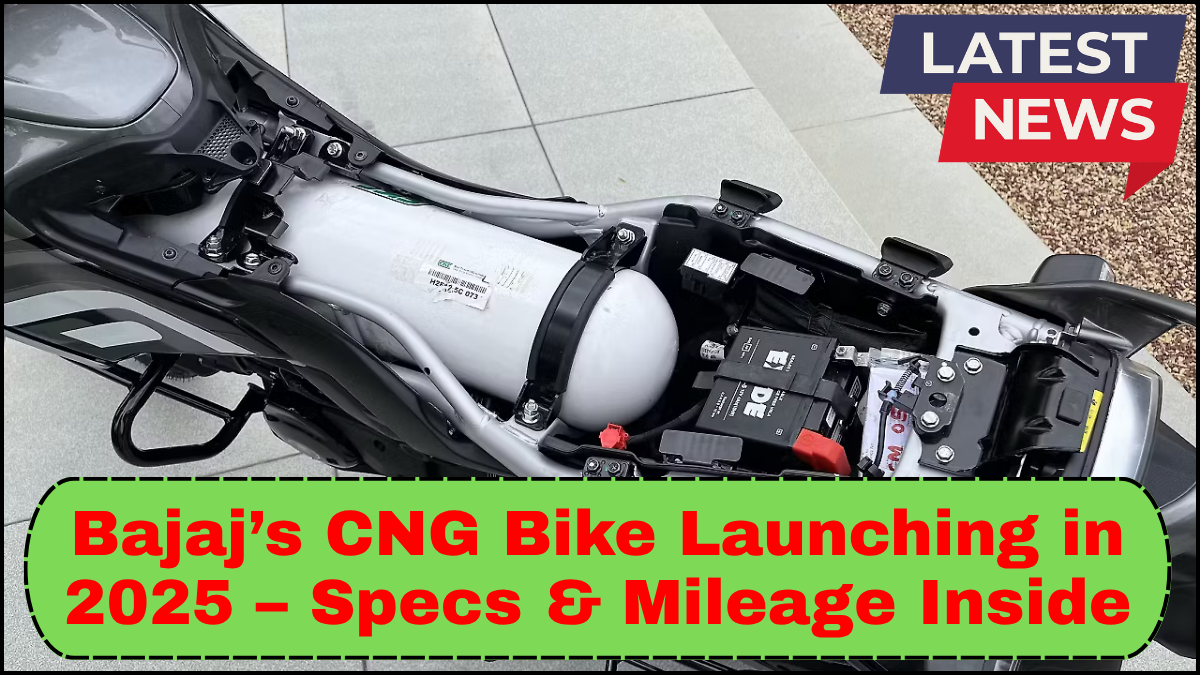Bajaj Auto, one of India’s most trusted two-wheeler manufacturers, is set to disrupt the market with the launch of its first CNG-powered motorcycle in 2025. As concerns over rising fuel prices and environmental pollution intensify, Bajaj’s entry into the CNG bike segment comes as a bold and strategic move.
Below is everything you need to know about this innovative launch: from technical specifications to expected mileage, design cues, and what it means for the Indian commuter.

Why a CNG Bike Now?
With India grappling with air pollution and growing fuel expenses, CNG (Compressed Natural Gas) presents a cleaner and more economical alternative to petrol. Bajaj has long been a pioneer in offering value-driven mobility solutions, and the upcoming Bajaj CNG Bike is a timely response to consumer demand for greener and more cost-effective options.
Rajiv Bajaj, Managing Director of Bajaj Auto, has confirmed that the bike is already in advanced stages of development and will be launched in India in 2025. This will mark the first CNG-powered motorcycle in the country, potentially setting a new trend in sustainable mobility.
Expected Specifications
While Bajaj has kept official specs under wraps, insiders suggest the bike will feature the following:
- Engine Displacement: Likely between 100cc to 125cc
- Fuel System: Dual-fuel technology (CNG + Petrol backup)
- Transmission: 4-speed manual gearbox
- Frame & Suspension: Lightweight chassis with telescopic front forks and rear twin shocks
- Brakes: Drum brakes on both ends (for cost-efficiency)
- Wheels: 17-inch alloy wheels
This combination points to a commuter-focused motorcycle with durability and affordability at its core.
Mileage & Performance
One of the biggest draws of the upcoming Bajaj CNG bike will undoubtedly be its impressive mileage. Early reports indicate:
- Mileage on CNG: 80-100 km/kg
- Mileage on Petrol (if included): Around 60-70 km/l
This dual-fuel setup ensures peace of mind for riders even in areas with limited CNG infrastructure, making it a versatile option for daily commuters.
Cost & Pricing Strategy
Affordability will be central to the bike’s appeal. The expected ex-showroom price of the Bajaj CNG Bike is between INR 80,000 to INR 95,000. The competitive pricing, combined with lower running costs, positions it as a game-changer for budget-conscious riders across urban and semi-urban India.
Design & Aesthetic
Expect a no-frills, functional commuter design with:
- Upright seating posture
- Minimalist fuel tank design to accommodate the CNG cylinder
- Digital-analog instrument cluster
- LED headlamp and indicators
The frame will likely be reinforced to handle the added weight of the CNG cylinder without compromising on handling or balance.
Market Impact & Rivals
With no direct competitors in the CNG motorcycle category yet, Bajaj enjoys a first-mover advantage. However, the success of this model could prompt rivals like TVS, Hero MotoCorp, and Honda to consider similar alternatives.
Bajaj’s strong dealership network and existing manufacturing capabilities ensure it can scale production quickly if demand surges post-launch.
India Launch Timeline
The official India launch of the Bajaj CNG Bike is expected in mid-2025, with pilot testing already underway in select regions. Bajaj is reportedly working closely with CNG suppliers and government authorities to ensure infrastructure readiness in key markets.
FAQs About the Bajaj CNG Bike
Q1: Is this the first CNG bike in India?
Yes, the Bajaj CNG Bike will be India’s first motorcycle powered primarily by Compressed Natural Gas.
Q2: Can I switch between petrol and CNG modes?
Yes, the bike is expected to offer dual-fuel capability, allowing riders to switch as per availability.
Q3: Will CNG filling stations be a problem?
CNG infrastructure is growing steadily in India. Bajaj is also collaborating with fuel providers to address availability.
Q4: Is maintenance more complex than petrol bikes?
Not significantly. Bajaj is expected to provide specialized training to its service network for CNG-specific components.
Q5: Who is this bike for?
Primarily for daily commuters, fleet operators, and eco-conscious riders looking for cost-effective transport.



